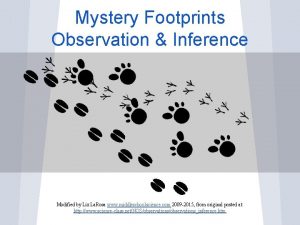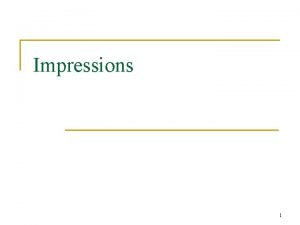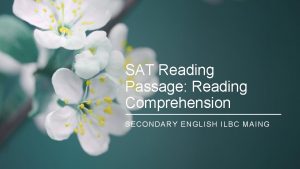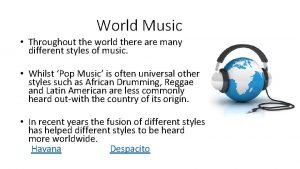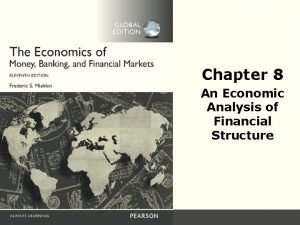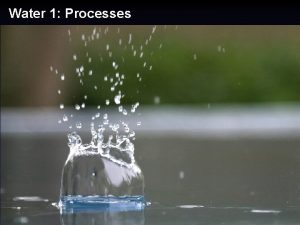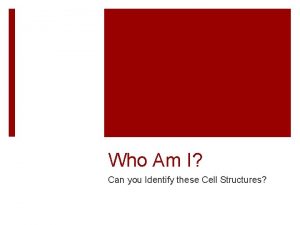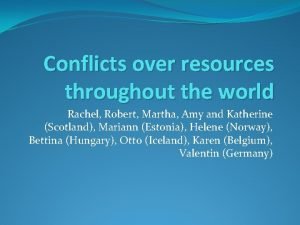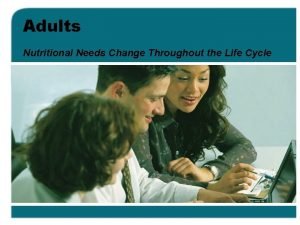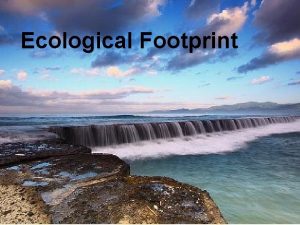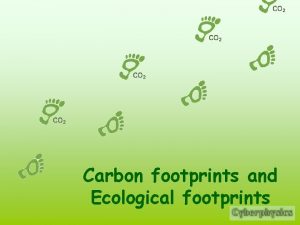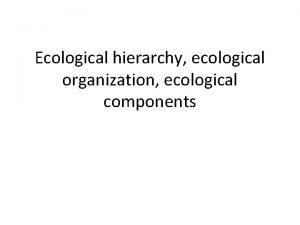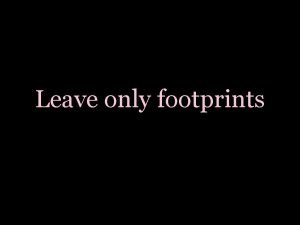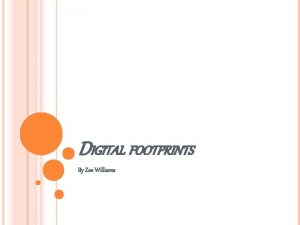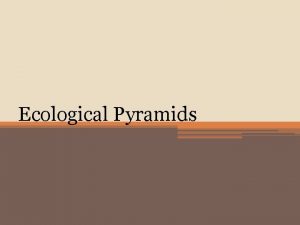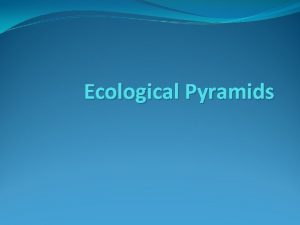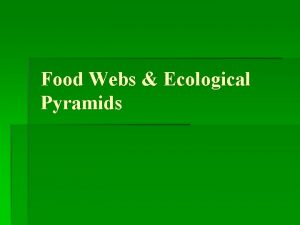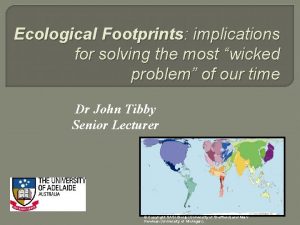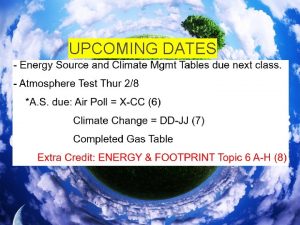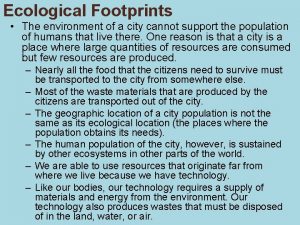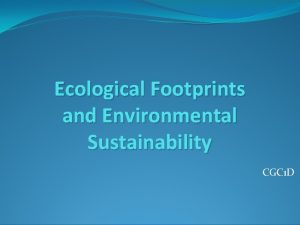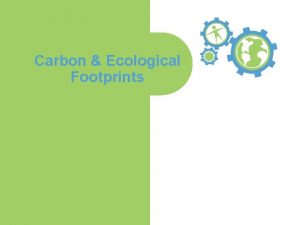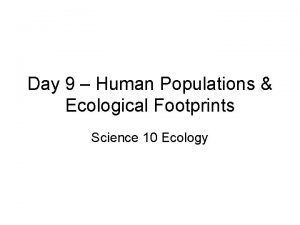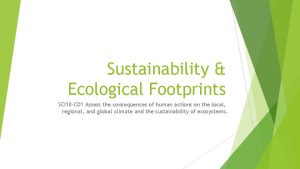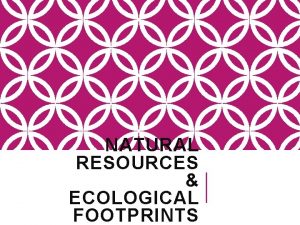Ecological Footprints Chapter 32 Introduction Throughout this course























- Slides: 23

Ecological Footprints Chapter 32

Introduction • Throughout this course we have looked at how people use the Earth and what impact this use might have on it. – Example: agriculture, mining, forestry, etc. • The purpose of this last chapter is to introduce you to a way of measuring the demand we place on the environment – the ecological footprint

Ecological Footprint • Is the amount of space required to support a person’s activities. • This concept converts all human activities to equivalent land areas • In order to live, we consume what nature offers. Every action impacts the planet's ecosystems. • This is of little concern as long as human use of resources does not exceed what the Earth can renew. But are we taking more?

"Earth provides enough to satisfy every man's need but not every man's greed. " - Mahatma Gandhi




• Add up the land it takes to grow your food, collect your water, produce the materials for the building you live in, the clothing you wear and all the other things you use or consume. . . add it all up, and that's your ecological footprint.

How do you measure your EF? • You measure your ecological footprint in land. It's expressed in acres or better yet in hectares. • One hectare is 100 x 100 square meters. An acre is about 4047 square meters, so a hectare measures about two-and-a-half acres.

Is this concept important? • The size of your footprint is important. • The human population is 6 billion and growing, and there is only so much land in the world.


So how much land do we use? • Today, humanity's Ecological Footprint is over 23% larger than what the planet can regenerate. In other words, it now takes more than one year and two months for the Earth to regenerate what we use in a single year. We maintain this overshoot by liquidating the planet's ecological resources. This is a vastly underestimated threat and one that is not adequately addressed.





Sustainability • Sustainability is a simple idea. It is based on the recognition that when resources are consumed faster than they are produced or renewed, the resource is depleted and eventually used up. In a sustainable world, society's demand on nature is in balance with nature's capacity to meet that demand.






 Safety visual management
Safety visual management Observation vs inference footprints
Observation vs inference footprints Take only photos leave only footprints
Take only photos leave only footprints Cai guo qiang footprints of history
Cai guo qiang footprints of history Floor footprints visual management
Floor footprints visual management Tool marks forensics
Tool marks forensics What is half brick wall
What is half brick wall Course number and title
Course number and title Course interne course externe
Course interne course externe Types of main characters
Types of main characters Battlefield along german and russian border
Battlefield along german and russian border Which reaction does akira most fear from chie?
Which reaction does akira most fear from chie? Throughout the world there are different
Throughout the world there are different A dance that shows imagery combat duel
A dance that shows imagery combat duel Have been faced
Have been faced Throughout history people
Throughout history people Eight basic facts about financial structure
Eight basic facts about financial structure Throughout history water
Throughout history water A shot rings throughout europe
A shot rings throughout europe My name means colored bodies
My name means colored bodies Uniform throughout
Uniform throughout Throughout the world there are
Throughout the world there are Nutritional needs throughout the life cycle
Nutritional needs throughout the life cycle Introduction to banking course
Introduction to banking course

